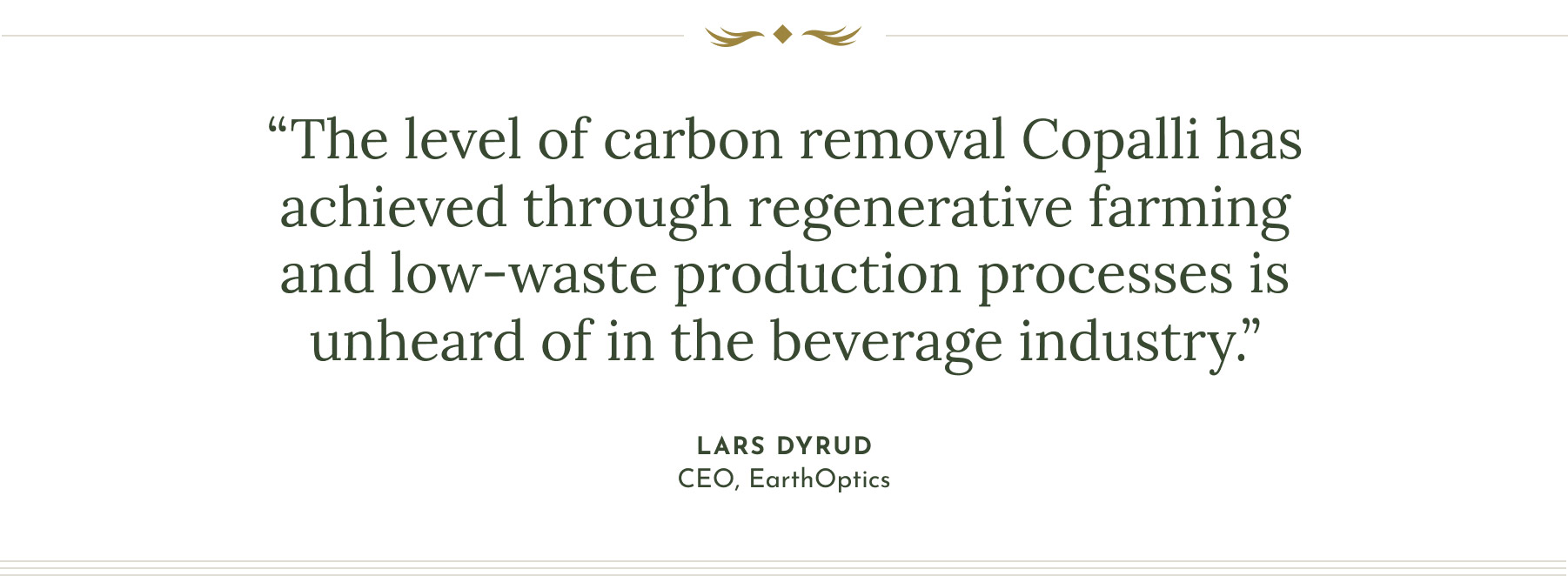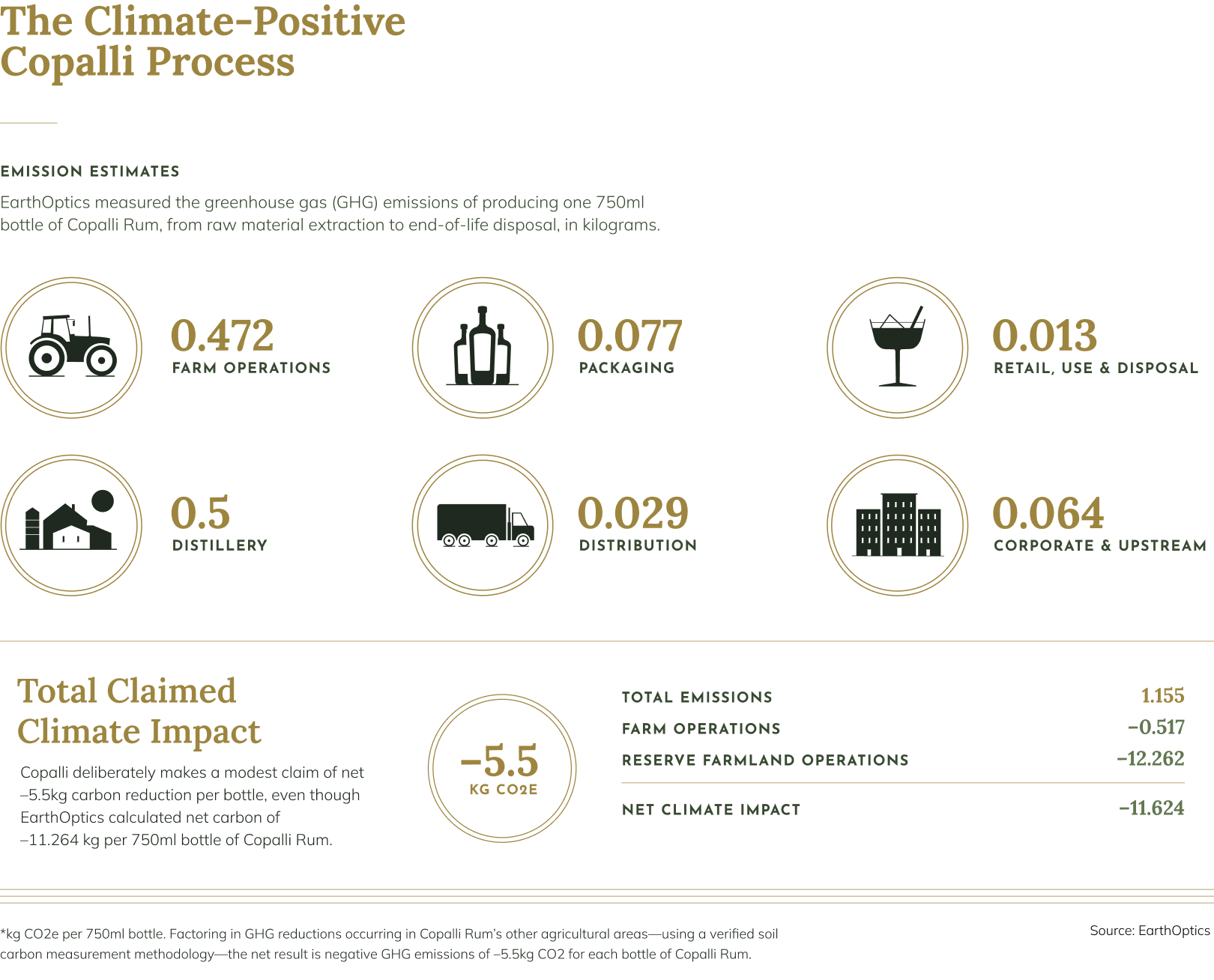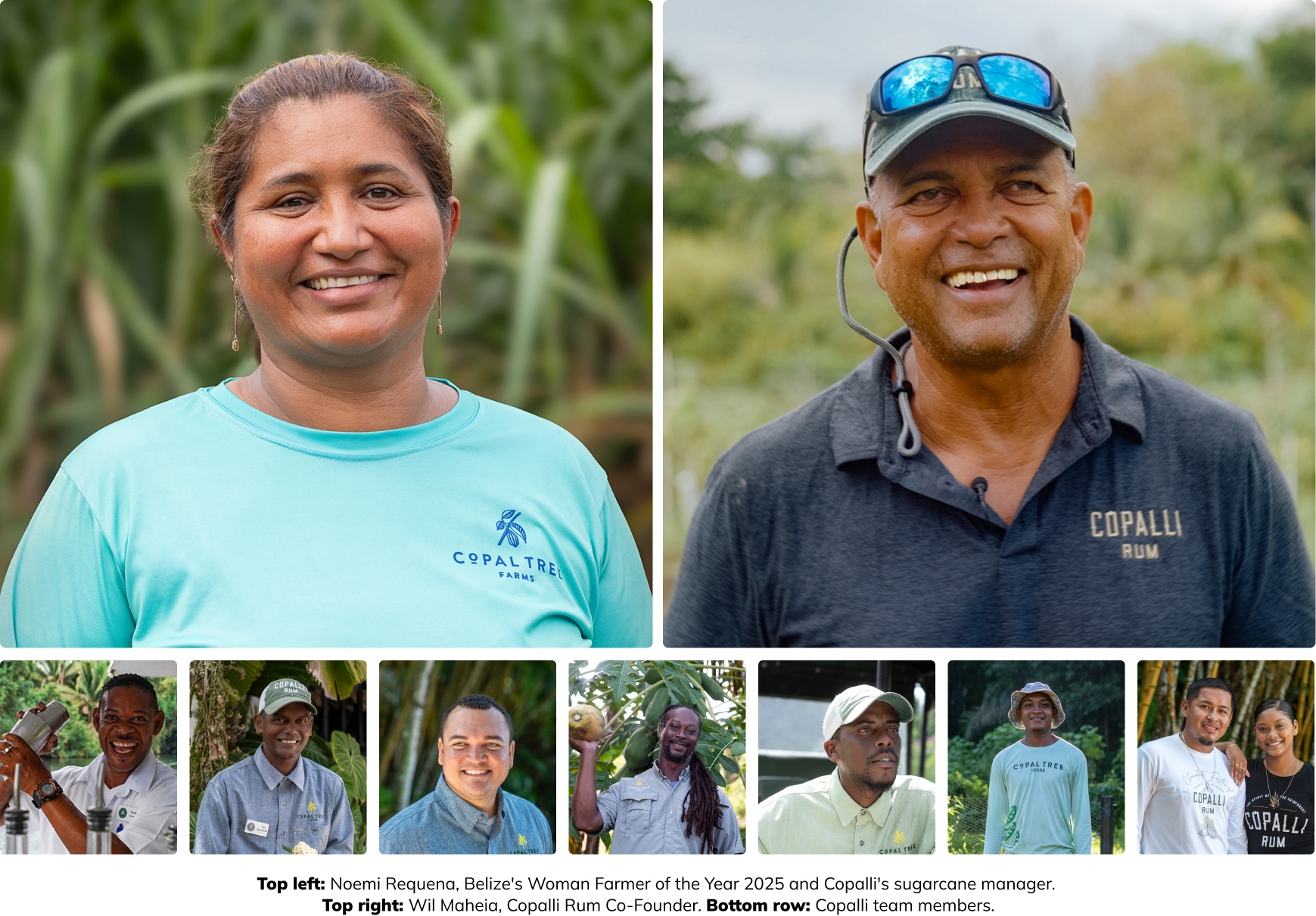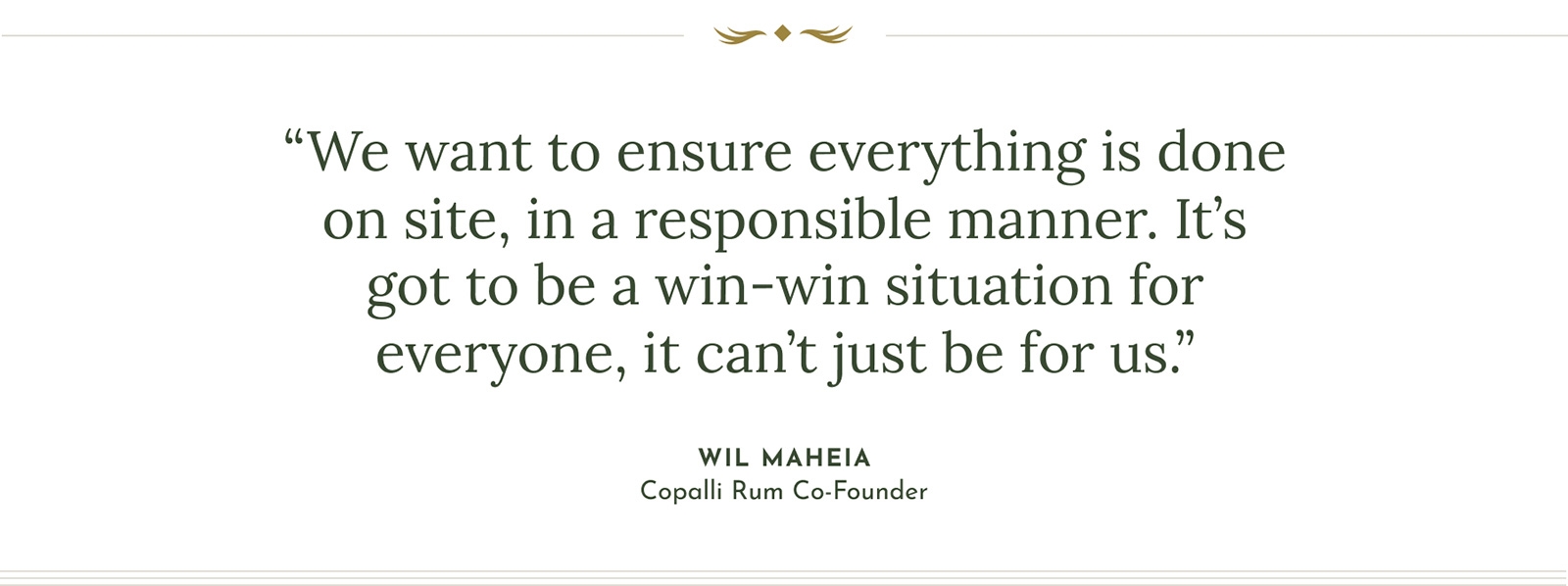The Premium Rum That’s Rooted in Sustainability

When Wil Maheia told friends that he was helping to start a distillery in his native southern Belize to make a world-class rum from organic local sugarcane, free from additives, most were skeptical.
Almost a decade later, the skeptics have gone quiet. Copalli Rum has won dozens of industry awards for its quality and taste. Most recently, it won Best in Show at the 2025 TAG Spirits awards and won in four categories at the 2025 Global Drinks Intel ESG awards, including categories in sustainability, water preservation and reducing greenhouse gas emissions, further underscoring its commitment to protecting the environment.
It’s also lauded for its dedication to simplicity: It’s made from organic sugarcane, rainwater and non-GMO yeast. Each bottle of Copalli Rum removes carbon emissions from the atmosphere through regenerative agriculture practices.

Although Copalli Rum was conceived as a premium product, conservationist Maheia’s vision went further—he wanted to create a product that was high-quality, good for the planet and gave back to the local community. When the opportunity arose in 2015 to construct a distillery on a defunct citrus farm in his hometown of Punta Gorda, he seized it. Together with philanthropist Todd Robinson, Maheia acquired the property, which is adjacent to 12,000 acres of rainforest that had been previously purchased, with the ambition to “do something we could be proud of” for the wildlife, the local economy and the 6,000 residents of Punta Gorda.
Could a new sustainable premium product succeed in the $2.5 trillion global alcohol beverage market?


Since Copalli’s launch in 2018, demand for environmentally conscious brands looks to be part of a wider trend of consumers calling for more sustainable products: Research from NYU found that sustainability-marketed products grew 2.3 times faster than their conventional counterparts over the past five years, while recent research from The Harris Poll, commissioned by Copalli, revealed that 84% of consumers are interested in sustainably made spirits, and nearly half would choose a spirits brand that is carbon-neutral over one that isn’t.
Today’s discerning drinkers are no longer fooled by greenwashing and want to see data and certifications that back up brands’ claims—which is why Maheia has verified Copalli’s methodology through third-party validation.
“We have a lot of checks and balances, because there's a lot of greenwashing out there and we definitely don't want to be accused of that,” Maheia says. “And I'm on the ground, I'm the guy that will meet everybody at the bar out there later, you know? So whenever I go to the bar, I want to be able to hold my head up high, to be sure that the product in our cocktails is good.”
Maheia brought in EarthOptics, a US-based soil-mapping company, to conduct yearly tests that measure how much carbon is stored in the soil in Copalli’s fields. Its findings confirm that Copalli’s agricultural practices are sequestering carbon from the atmosphere and storing it in the soil for the long term.
EarthOptics also conducted a greenhouse-gas life cycle assessment (LCA) to measure the amount of carbon it takes to produce a bottle of Copalli Rum, from growing the sugarcane to distilling and transporting the rum, all the way through to recycling the glass bottle after the rum has been consumed.
The assessment found that each bottle has a carbon footprint of 1.155 kilograms of carbon dioxide equivalent. After accounting for the carbon sequestration occurring through Copalli’s farming practices, EarthOptics found that the production of a bottle of Copalli Rum sequestered over 5.5 kilograms of greenhouse-gas emissions from the atmosphere. In simple terms, Copalli is removing more carbon than it emits per bottle.

The LCA was then independently verified by Preferred By Nature, a global nonprofit organization that supports land management and business practices that are better for the planet. This third-party verification offers an additional expert review and is crucial when it comes to backing up carbon claims, says Lars Dyrud, CEO of EarthOptics.
“More companies are either interested in or increasingly required to account for their Scope 3 emissions,” he says. “Regulations in California and the EU are coming online over the next couple of years that will increasingly require companies to account [for their claims].”
EarthOptics’ methods are designed to deliver an irrefutable claim. “We collect and test soil samples from the same spot every year and store them all in our soil library,” says Dyrud. “So, five or 20 years from now, if someone wants to audit our numbers, we can retrieve historical soil samples, test them side by side and show the carbon progression story that's been happening.”


Copalli’s sustainability efforts largely focus on impact reduction, including its commitment to “insetting”—deploying nature-based solutions to reduce emissions within the company’s operations.
Copalli composts much of the material from its sugarcane plants. “Whatever comes out that we’re not using in the rum goes back into our sugarcane as organic fertilizer,” says Maheia. “We don’t burn our cane fields. Many do to boost tonnage, but we rely on a whole-ecosystem approach. For example, we use biological control—keeping large trees for hawks that manage snake populations.”
The way Copalli produces its sugarcane sets it apart from other farms, and it’s paying off. “We’re proving that doing it the regenerative way is the right way, because this year in northern Belize, the top-producing sugar region, we understand that growers are only getting between 17 and 20 metric tons per acre, and they use a lot of chemicals. We are getting an average of 35 metric tons per acre, and using no chemicals.”
Unlike competitors that outsource packaging, Copalli bottles all its rum on site in 100% recycled glass, refusing to cut corners on labor costs or unnecessarily increasing emissions.
What impact does insetting have on Copalli’s Scope 3 emissions? “If you're making any liquor, there's no way to avoid Scope 3 emissions, and if you don't include the Scope 3 emissions in your data, then it wouldn't be insetting,” says Professor Caleb Gallemore of Lafayette College in Pennsylvania, who researches deforestation and agriculture.
Copalli’s approach, he explains, is to use the carbon sequestration power of their regenerative agriculture practices to balance out the total of their greenhouse gas emissions.
“The sequestration from agricultural practices should meet or exceed the emissions associated with bottles, shipping, waste disposal, and so on, which are outside Copalli's direct control,” says Gallemore. Based on the LCA, the “on-farm activities sequester more emissions than are generated by all three scopes of the firm's associated emissions,” he notes.
“We want to ensure everything is done on site, in a responsible manner,” Maheia says. “It's got to be a win-win situation for everyone, it can't just be for us.”
These benefits were quantified by a leading third-party firm, terraPulse. Using detailed GIS mapping year over year remote sensing data, terraPulse assessed and compared rainforest protected by Copalli to regional deforestation baselines, in terms of ton of avoided emissions. This comparison, done in accordance with internationally recognized best practices, calculates annual carbon benefits available for use.


Recently named Belize’s 2025 Woman Farmer of the Year, Noemi Requena joined Copalli in May 2024 as sugarcane manager, overseeing 212 acres and a team of 30 field workers, as well as running her own three-acre plot nearby. Joining Copalli, Requena saw a chance to become “part of a team that shares my passion for regenerative, organic agriculture, creating a relationship between humanity, land and the environment.”
An advocate of passing on her knowledge, she highlights the opportunities that Copalli offers the next generation of farmers. “I run small sessions with our field workers, explaining why we do things this way at Copalli, so that they can understand and then go home and share what they’re learning with others. We change things by sharing knowledge. I always say that if I have knowledge and don't share it, I'm not making a difference,” Requena says.

For Maheia, a happy workplace is further proof of Copalli’s sustainability credentials. “We employ 100 people from around the Toledo region and staff turnover is low,” he says, adding that “there is “a waiting list to work with us” at Copalli’s farm and distillery, and at Copal Tree Lodge, a former fishing lodge where eco-conscious holidaymakers can now come to stay in a luxury jungle resort.
When Maheia and Robinson originally purchased the estate and adjacent rainforest, they committed to protect the habitat and its biodiversity. Had the purchase not been made, the rainforest might have been destroyed and converted to agricultural fields for large-scale corn, banana, and shrimp farms.
With tourism being Belize’s second-largest industry after agriculture, Maheia says he knew that “tourists would come—and they’d have a great time.”
“Rum is a beautiful drink and it’s an important part of Belizean culture and tradition. Ours is a clean-tasting rum, because there’s no molasses in it, no chemicals, just the three ingredients. Ours is among the first certified organic farms in Belize, and we’ve had to shift a lot of minds, but we’re making it work,” says Maheia. “Come check us out—see what we’re doing.”
To business leaders considering a shift to sustainable practices, but still questioning their commercial viability, Maheia hopes Copalli’s example will serve as inspiration. “Don't be afraid to take on the challenge,” he says. “The evidence is speaking for itself, because this year we have a bumper crop of sugarcane in production. I say do it the right way, and success will come your way.”


